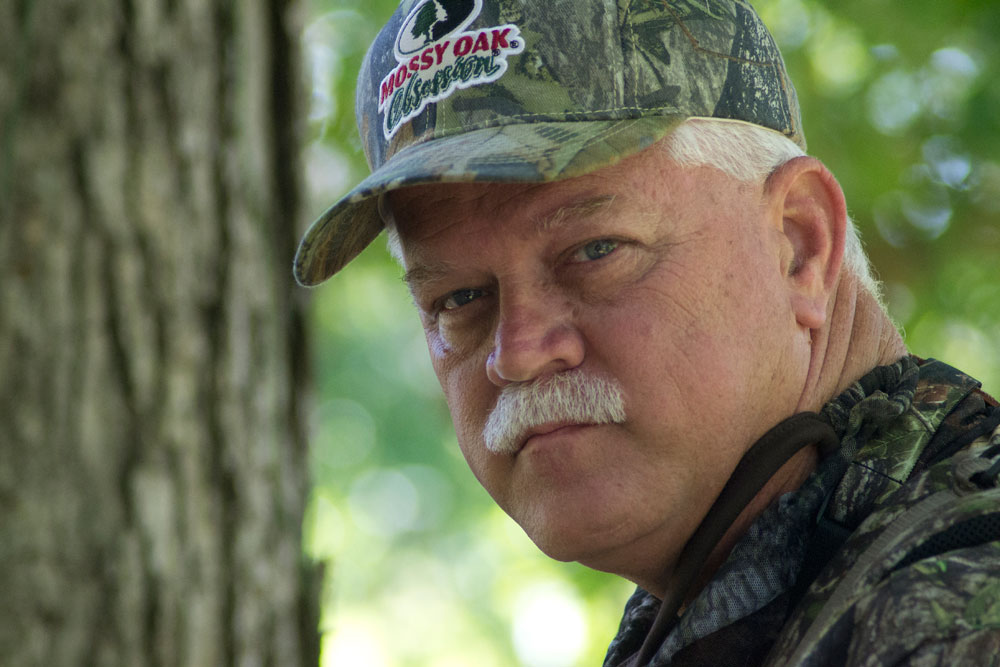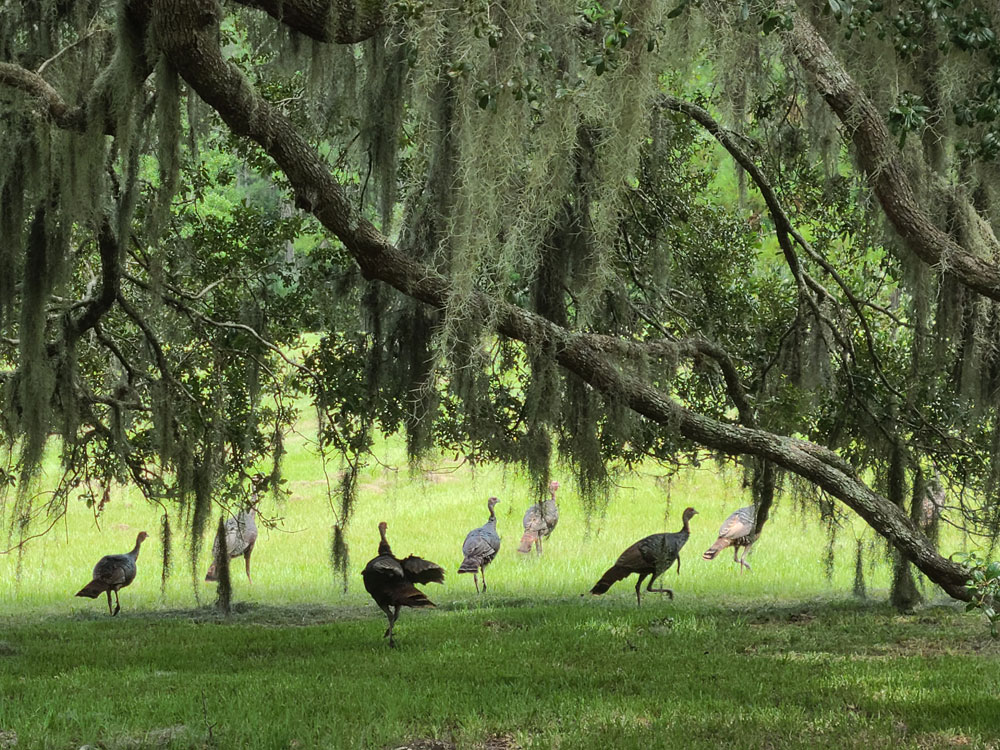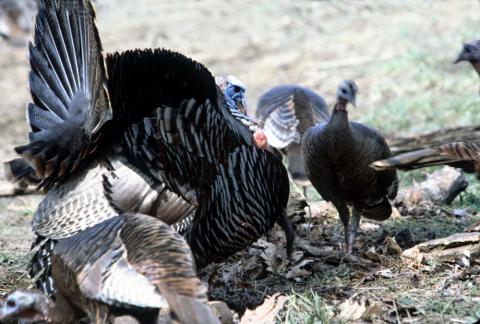provided by John E. Phillips
Osceola turkeys are a subspecies of the eastern wild turkey. The season starts March 6 for Keith Kelly. This dark turkey with black wings that have small white bands on them and dark-brown-tipped tail feathers lives in south Florida. The Osceola turkey got its name from Chief Osceola of the Seminole Indian nation, the only band of Native Americans who never surrendered or were captured by the United States government. According to the Seminoles I met, many Seminoles assumed that the Osceola turkey even might be the spirit of their dead ancestors, because Osceolas vanished easily and quickly. Today about 100,000 wary and hard-to-hunt Osceolas live in central and south Florida, primarily south of Orlando, with the biggest males weighing about 20 pounds. Most Osceolas live on about 20 public Wildlife Management Areas (WMAs) with some on private lands.

One of the men who knows the Osceola best is Keith Kelly, the manager of the Dee-Dot Timberlands, 25,000 acres of timberland near Jacksonville, used exclusively for family, friends and charity turkey hunts. Kelly has been a part of Mossy Oak for many years and has hosted hunts for Wounded Warriors as well as for Seamark Ranch, a Christian home for homeless and abused children. According to Kelly, “Hunters pay to come to the Seamark to hunt, and room, board and guides are provided for these hunters. All of the money we raise goes to Seamark Ranch. Mossy Oak also sponsors this hunt. Bill Sugg, the president of Mossy Oak, and Ronnie ‘Cuz’ Strickland, the VP of Mossy Oak, guide on these hunts, with Mossy Oak providing all the camo. Mossy Oak has filmed many TV shows on these turkey hunts.”
The places in south Florida where we hunt near Lake Okeechobee are made up of cattle pastures and orange groves and provide open-field type turkey hunting with oak hammocks where turkeys roost and contain oak trees and cabbage palms. Our turkeys at Dee-Dot are primarily Osceola turkeys, but we do have some intergrade turkeys where the gobblers may have mixed with eastern turkeys. But when we hunt the ranches near Lake Okeechobee, those gobblers are pure Osceolas. The difference between an Osceola turkey and an eastern turkey is that Osceolas are much darker, have longer legs and usually weigh much less than a mature eastern gobbler. What distinguishes the Osceola gobbler from all the other tom turkeys is the white bands in their wings. If you look at an eastern gobbler’s wings, the white bands are solid white. If you stretch out an Osceola’s wings, those bands will be broken or nonexistent, causing the Osceola to be much darker with not much white in his wings.
To go on a true Osceola hunt, realize the way we hunt Osceolas in South Florida is field turkey hunting. Since the ranches we hunt in south Florida are so open, there are not many woodlots on these farms. We’ve hunted the lands in south Florida so much that we know that very few roost sites are in the places we hunt. I believe the main key to locating Osceola turkeys is to know the land you hunt, and the longer you hunt that property, the easier you’ll find the turkeys’ roost trees.

The second step to consistently taking the Osceola gobbler is to learn where that group of turkeys likes to fly down to after they leave the roost. The habitat for these turkeys to roost in is so sparse that locating roosting spots in south Florida is much easier than pinpointing roosting regions for eastern gobblers. The oak hammocks where the birds roost are fairly open. The oak trees have the vegetation under them mostly shaded out, and the ground doesn’t get much sunshine. The gobblers in the morning usually will pitch down in the oak hammock or fly out to the closest opening to their roost site. Once they get out in the fields, they’ll spend a lot of time in the fields bugging and feeding. Many of these fields will have cattle in them. So, cattle don’t usually spook the gobblers and hens like they may spook turkeys in other sections of the country. Osceola turkeys feed quite a bit on the undigested grain in the cattle’s manure. When an Osceola tom leaves the roost, he usually only has two places he’ll go: the oak hammock or the field closest to the oak hammock. Even if he pitches down in the oak hammock, he’ll spend a portion of the day in the orange groves where he also bugs.
Another reason I love turkey hunting so much is because that was something my son Cole and I enjoyed doing together. Cole, who helped us guide Wounded Warriors to turkeys and on the Seamark hunts, passed away in a car wreck in 2019, at the age of 14. When the folks at Woodhaven Custom Calls learned of Cole’s passing, they built me a glass call with a picture of Cole in the face of that call. I carried and used that call all during the 2020 turkey season. All the turkeys taken in 2020, including by veterans, any members of my family and even my grandchildren, were harvested with Cole’s Call. I’ve got photos of them all with their turkeys in a book.






























